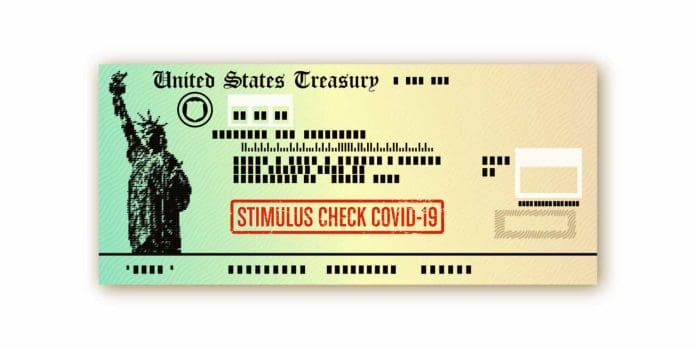The Child Tax Credit stimulus check was one of the most successful federal measures ever when it comes to poverty alleviation measures. The CTC payments gave parents the chance to manage their tax burden. It also helped offset the expensive proposition of raising a child during an economic downturn.
Back in 2015, the federal administration reported that it cost $233,000 to cover housing, healthcare, food expenses, clothing, childcare, education, transportation, and various other household expenses necessary for a child to thrive from birth till they reach adulthood.
Fortunately, the CTC payments allowed low to moderate-income parents to offset costs and lower household tax bills. Finally, it gave more money for other expenses on the sidelines to most individuals, parents, and families.
The regular Child Tax Credit stimulus check was worth up to $2,000 for every child whose family and the child themselves met the initial expenses for certain requirements.
But post the COVID-19 pandemic, President Biden signed the American Rescue Plan Act in the first quarter of 2021 within weeks of assuming power after Trump finally relinquished power. The enhanced version of the Child Tax Credit was increased under the Rescue Plan and residents could now get up to $3,600 per child for the 2021 income tax year.
Further, parents and individuals could now claim the money in advance and not after filing the income tax return for a particular year. As a result, they got the money in advance for the 2021 financial year.
Residents began getting the money in advance under the new rules. Parents thus began receiving the monthly stimulus checks by July 2021 and the payments continued through December 2021.
The total payments sent out through the six stimulus checks were 50% of the total amount. The rest were credited to the bank accounts of beneficiaries once they submitted their income tax return in the 2022 income tax year.
The criteria for qualifying for the CTC stimulus check were not much different from the regular CTC payment requirements. But some significant changes included the extension of the maximum age to seventeen to claim the stimulus check.
The other significant change was the waiver of the requirement to be an income taxpayer to be eligible for the CTC stimulus check. Previously only those who paid taxes were eligible for the CTC stimulus checks. Low and moderate-income families and single parents who declared zero tax owing to low or no income were denied payments under this rule.
The child could also be a son or daughter, step-children, foster child, nephew, or niece. Further, like before, the child could not be claimed as a dependent by other families and should provide less than 50% of the support to the families.
The claimant child should also be an American citizen or a resident alien, or an American national. They should also not have filed any joint income tax returns along with another taxpayer unless they have filed the return to claim tax refunds that were withheld or an estimated tax paid.
The child must also be n possession of a valid TIN (Taxpayer Identification Number). The expanded Child Tax Credit and before TCJA, taxpayers could claim children by quoting the ITIN issued by the Internal Revenue Service, not the Social Security Administration.
This supported documented immigrants who were eligible for the credits.
The Child Tax Credit payments cannot under normal circumstances be above the parents’ tax liability. But filers may legitimately claim that the Additional CTC stimulus check payments allow them to be eligible for up to $1,500 of the $2,000 total Child Tax Credit stimulus check for each child as a refund for 2022.
Federal Void Force States To Continue Stimulus Checks Into 2023
Even as federal relief funds get bogged down for at least this year, federal stimulus checks continue into the second quarter of 2023. The lack of federal support forced states to intervene on a massive scale to support residents as they continued to battle post-pandemic economic blues.
Most states sent their stimulus checks within weeks of the federal government effectively ending support under various schemes including the Child Tax Credit stimulus check. The Child Tax Credit stimulus check monthly payments ended in December 2021. Though fifty percent of the amount was set off against the income tax returns filed in the first quarter of 2022, the federal stimulus checks had effectively ended with the last of the six stimulus checks.
Most states sent their stimulus check by the first quarter of 2022 within weeks of the end of the first of the federal payments. States such as New Mexico and Maine were the first off the mark with their suggestions.
But California had the biggest outlay of the states. The inflation relief payments initiated by the Golden State were the third round of stimulus checks.
The amount given out in this third round of state relief termed the Middle-Class Tax Refund varied between $200 and $1,050 depending on multiple factors including the tax filing status (individual or joint), and the Adjusted Gross Income for the state income tax return for 2020.
The filing should also have been done before October 15, 2021. Residents with an individual AGI of more than $250,000 and joint filers with double that AGI did not receive any stimulus check.
Among the states that are giving out stimulus checks in 2023 is Idaho. The state is giving out the greatest of 12% of the tax liability before rebate, other taxes, and credits or $75. It is complicated but works out to a substantial amount for each family.
The New Mexico stimulus check was also generous and was given out in two parts over four months in the second and third quarters of 2022. Under the first round, residents received $500 for joint filers and $250 for individual filers.
In the second round of rebate, filers received $1,000.
Pennsylvania has sent out between $250 and $650 for qualifying homeowners and between $500 and $600 for eligible renters. Senior citizens received up to $975.






